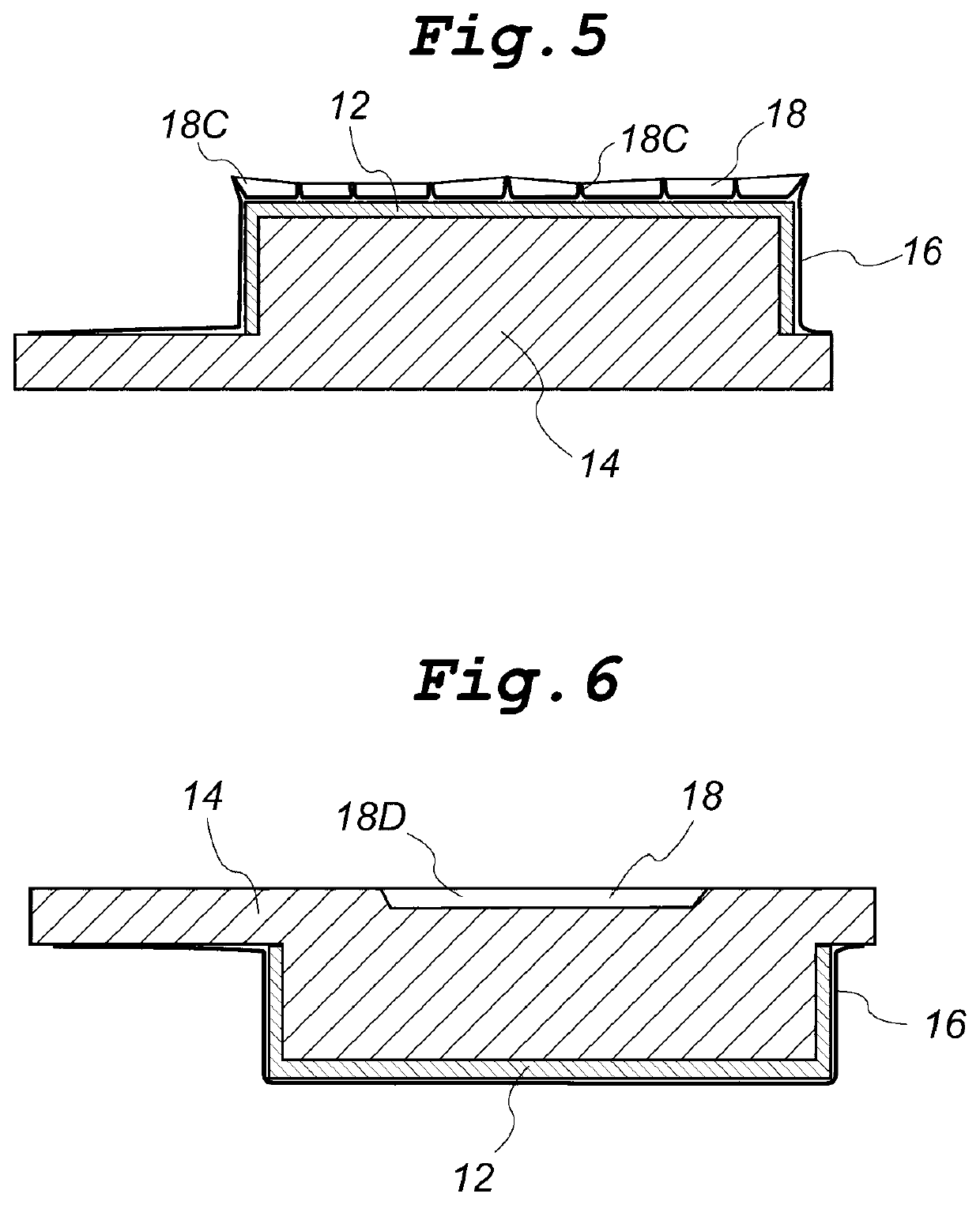Autoclave molding apparatus
- Summary
- Abstract
- Description
- Claims
- Application Information
AI Technical Summary
Benefits of technology
Problems solved by technology
Method used
Image
Examples
second embodiment
[0041]FIG. 4 is a schematic view of the condensed water holder 18 according to another embodiment (a second embodiment) of the present invention. This condensed water holder 18 is made of a mesh material 18B obtained by knitting fibers of a heat-resistant fibrous material capable of holding condensed water, for example, a synthetic fiber such as polyester or nylon, a hydrophilic natural fiber such as cotton or linen, or a glass fiber. Such a mesh material has openings 19B through which steam can pass easily. The amount of supplied water can be easily controlled by changing the diameter of the fibers of the fibrous material, for example.
third embodiment
[0042]FIG. 5 is a cross-sectional view of the condensed water holder 18 according to another embodiment (a third embodiment) of the present invention.
[0043]The composite material 12 made of a fibrous base material impregnated with a thermosetting resin matrix is sealed together with a molding tool 14 in the vacuum bag 16. The size of the vacuum bag 16 used is slightly larger than that of the assembly covered by the bag 16 so that the bag 16 can enclose the resulting molded article having a shape conforming to the shape of the molding tool. Therefore, wrinkles 18C are formed on the surface of the vacuum bag 16 and prevent the inner surface of the vacuum bag 16 from being closely contact with the surface of the composite material 12 and the surface of the molding tool 14. When the vacuum bag 16 is sealed, the wrinkles 18C are formed to have a shape for capturing the condensed water. The height of the wrinkles is determined based on the amount of water to be held.
[0044]The condensed wa...
fourth embodiment
[0045]FIG. 6 is a cross-sectional view of the condensed water holder 18 according to another embodiment (a fourth embodiment) of the present invention.
[0046]The composite material 12 made of a fibrous base material impregnated with a thermosetting resin matrix is sealed together with a molding tool 14 in the vacuum bag 16. A recessed portion 18D to serve as the condensed water holder 18 is preformed on a surface (top surface) of the molding tool 14 opposite to a surface on which the composite material 12 is placed. In the present embodiment, the assembly is disposed such that the surface of the composite material 12 faces downward in the gravity direction.
[0047]The condensed water generated during heating is accumulated in the recessed portion 18D. When the amount of the condensed water exceeds a predetermined value, it overflows from the recessed portion 18D. Therefore, the thickness of the condensed water is not large and thus the high efficiency of heat transfer during condensati...
PUM
| Property | Measurement | Unit |
|---|---|---|
| Temperature | aaaaa | aaaaa |
| Strength | aaaaa | aaaaa |
Abstract
Description
Claims
Application Information
 Login to View More
Login to View More - R&D
- Intellectual Property
- Life Sciences
- Materials
- Tech Scout
- Unparalleled Data Quality
- Higher Quality Content
- 60% Fewer Hallucinations
Browse by: Latest US Patents, China's latest patents, Technical Efficacy Thesaurus, Application Domain, Technology Topic, Popular Technical Reports.
© 2025 PatSnap. All rights reserved.Legal|Privacy policy|Modern Slavery Act Transparency Statement|Sitemap|About US| Contact US: help@patsnap.com



